Illustrated Checklist of the Mammals of the World
$268.80
Editors
Illustrators
In stock
$268.80
Weight
6.4 kg
Size
24 × 31 cm
Language
English
Format
Hardback
Pages
1166
Publishing date
September 2020
Published by
Lynx Edicions
Editors
Illustrators
Description
A definitive reference for mammal taxonomy and distribution: the Illustrated Checklist of the Mammals of the World
The Illustrated Checklist of the Mammals of the World is the most comprehensive, up-to-date illustrated reference to every currently recognized species of mammal. Published in two volumes, this essential work builds on the foundation of the Handbook of the Mammals of the World (HMW), updating taxonomy, distribution, and conservation status across the entire Class Mammalia.
This remarkable checklist covers 6,554 species across 27 orders, 167 families, and 1,343 genera, including recently described species, 104 extinct forms, and 19 domesticated taxa. It reflects the latest insights from molecular systematics, field research, and IUCN Red List assessments. Each species is presented with an updated scientific name, common names in English, Spanish, French, and German, IUCN conservation status, and taxonomic notes, accompanied by a color illustration and updated distribution map.
Key scope and purpose
The Illustrated Checklist of the Mammals of the World brings together years of collaborative research by leading experts, offering an indispensable resource for professionals and institutions involved in mammal study, conservation, and education. It includes species accounts for all recognized terrestrial and marine mammals—from familiar megafauna to elusive rodents and shrews—with consistent formatting for rapid access to key information.
Where subspecies are recognized, these are included with current distributions and updated names. All taxonomic decisions are aligned with the Mammal Diversity Database and the IUCN Red List, ensuring consistency with globally recognized standards.ry diversity of mammalian forms, from iconic megafauna to lesser-known rodents, bats, and shrews.
Highlights of the Illustrated Checklist of the Mammals of the World:
- Fully updated taxonomy covering all living and recently extinct species of mammals
- More than 7,150 illustrations, including over 700 new images
- 6,431 distribution maps, newly revised to reflect current data
- Common names in four major languages (English, Spanish, French, German)
- Coverage of all 27 mammalian orders, from monotremes to cetaceans
- Taxonomic notes that clarify recent changes, splits, and revisions
- Subspecies listed and mapped where applicable
- Foreword by Razan Al Mubarak, Mohamed bin Zayed Species Conservation Fund
Ideal for libraries, researchers, and conservation professionals
The checklist is designed to serve a broad audience: museum curators, academic researchers, field biologists, conservation NGOs, protected area staff, naturalists, and students. Its practical format and rigorous standards make it suitable both as a quick-access reference and as a comprehensive scientific resource.
For those who already own the nine volumes of HMW, the Illustrated Checklist of the Mammals of the World provides the essential updated taxonomy in a compact, accessible form. For those new to the series, it functions as a stand-alone global overview of mammalian diversity.
A collaborative effort from world experts
The checklist is edited by Connor J. Burgin, Don E. Wilson, Russell A. Mittermeier, Anthony B. Rylands, Thomas E. Lacher Jr., and Wes Sechrest—all globally respected experts in mammalogy. The illustrations are the work of renowned wildlife artists including Toni Llobet, Ilian Velikov, Lluís Sogorb, Faansie Peacock, Àlex Mascarell, Francesc Jutglar, Blanca Martí, Stephen D. Nash, and Jesús Rodríguez-Osorio, ensuring scientific precision and aesthetic quality.
Whether used as a field resource, a conservation planning tool, or a reference for curating mammal collections, the Illustrated Checklist of the Mammals of the World is a landmark achievement and a must-have for anyone working with mammals at a global level.
14 reviews for Illustrated Checklist of the Mammals of the World
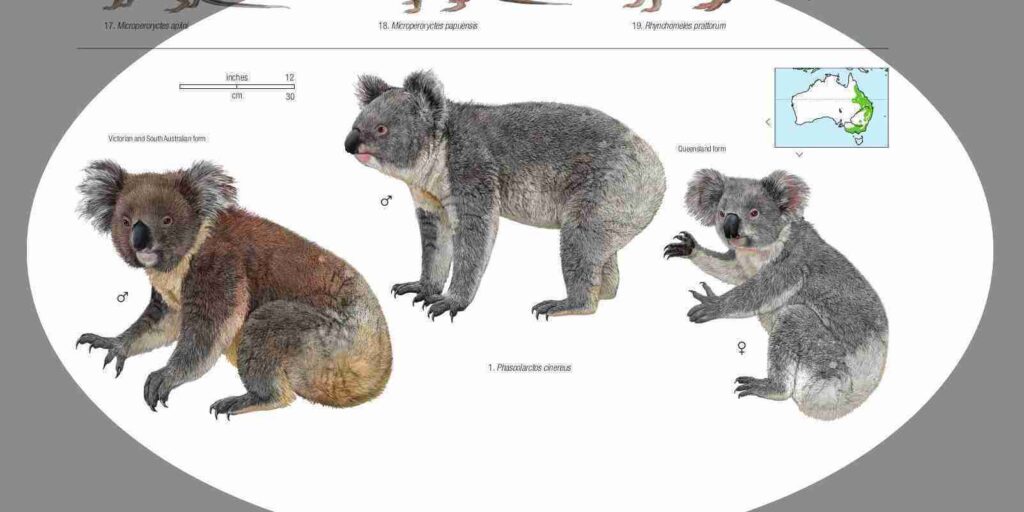
Color illustrations for all species, including distinctive subspecies and morphs, from the HMW series with numerous corrections and new figures.
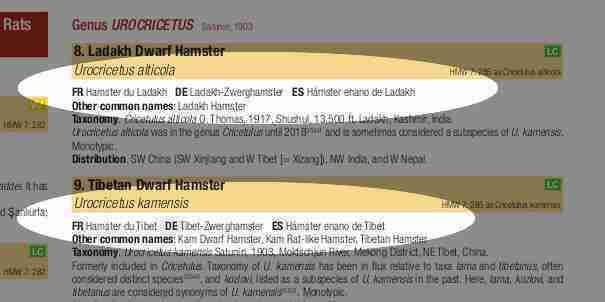
Revised species names in French, German and Spanish, and other common names in English when appropriate.
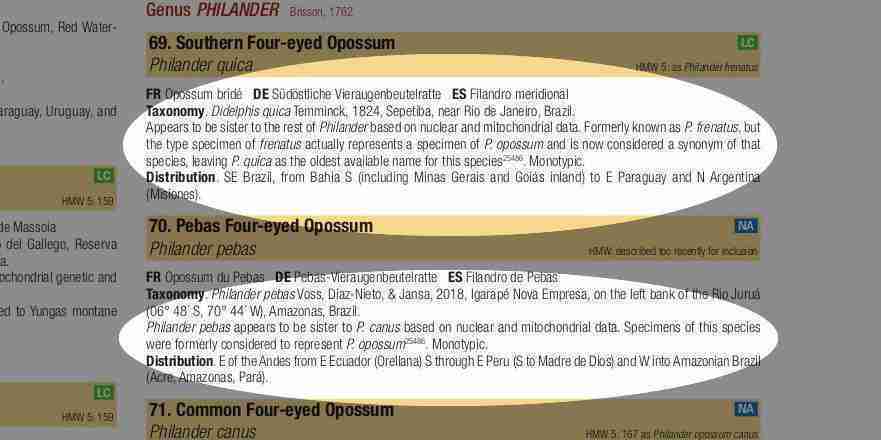
Completely updated at the macrosystematic, genus, species and subspecies levels.
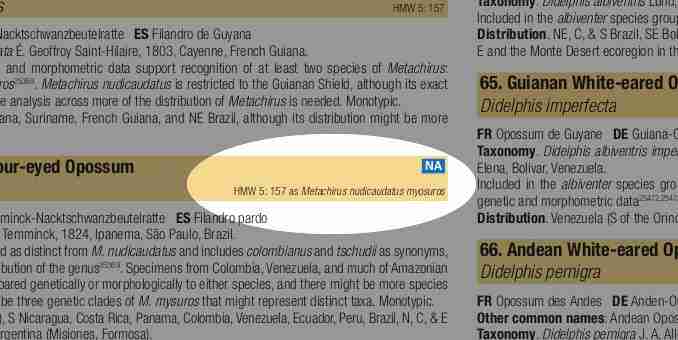
Each species conveniently cross-referenced to the volume and page of its treatment in the HMW series.
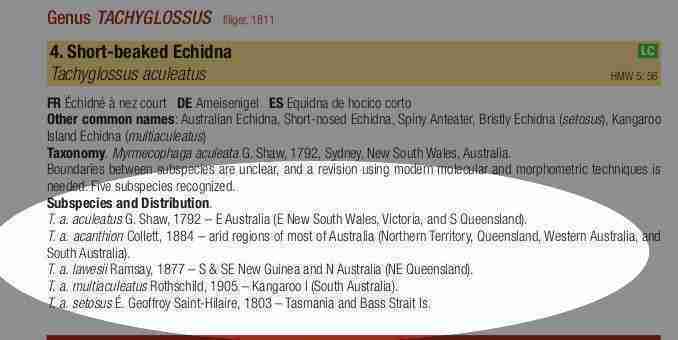
Detailed descriptions of ranges for all species and subspecies.
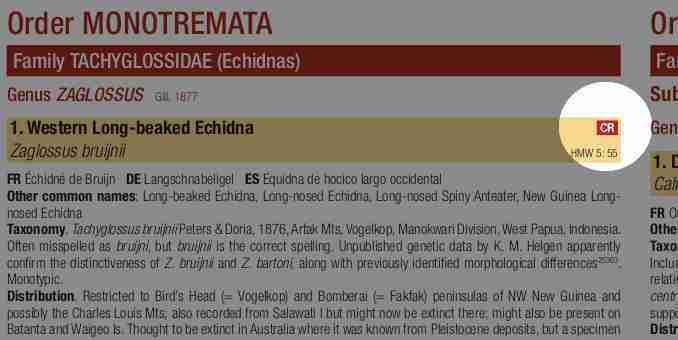
Current official IUCN category of each species from the 2020 IUCN Red List of Threatened Species.
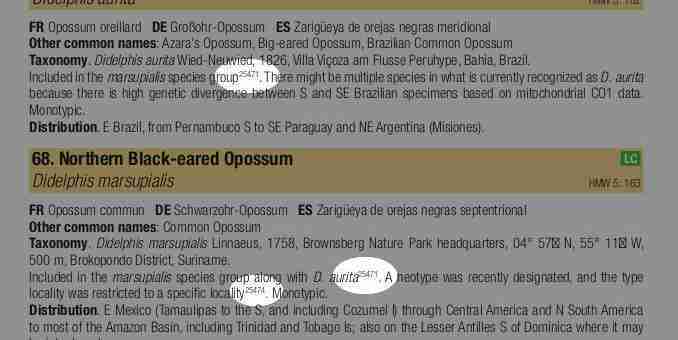
Reference numbers included in text associated with complete bibliographical list at the end of each volume.




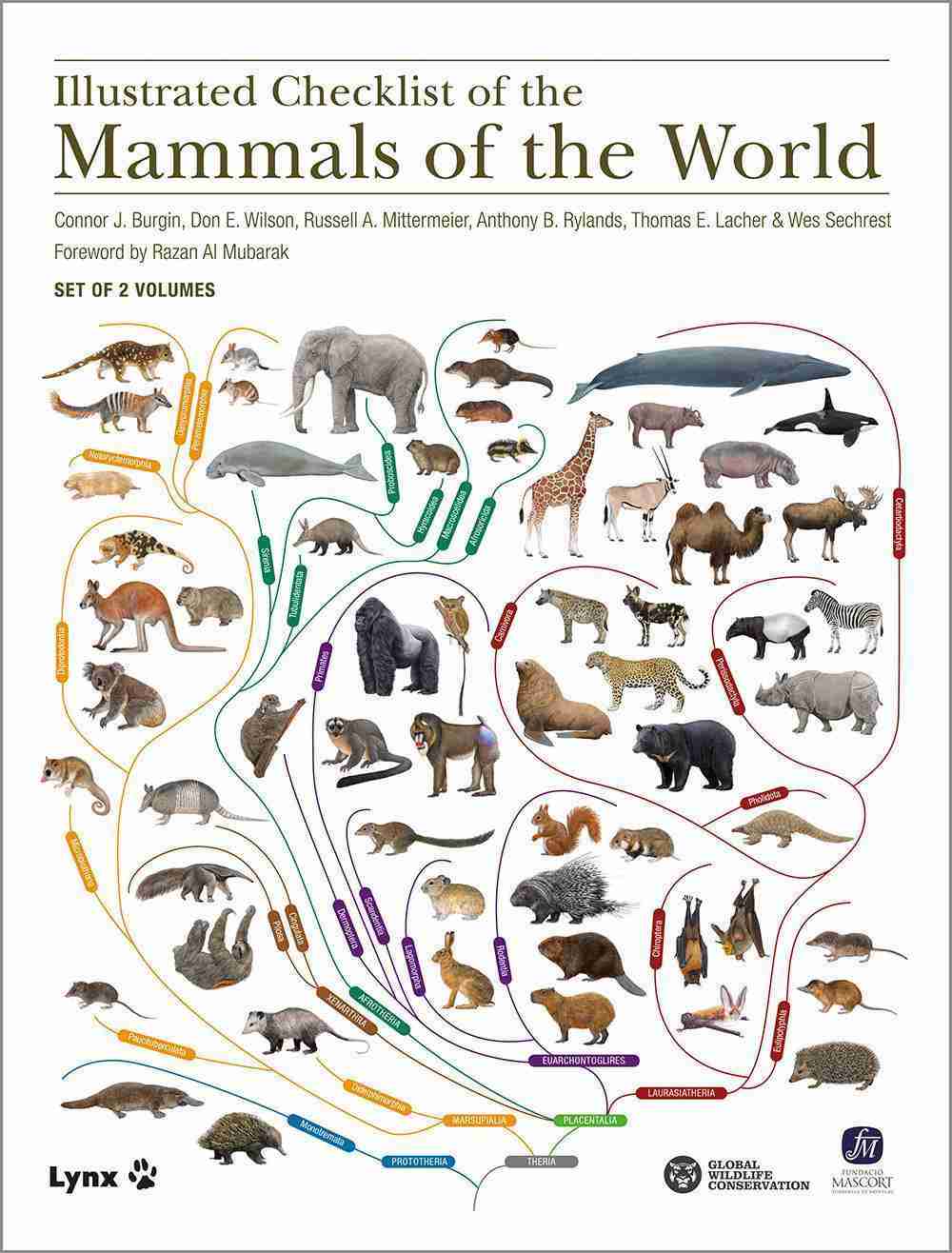
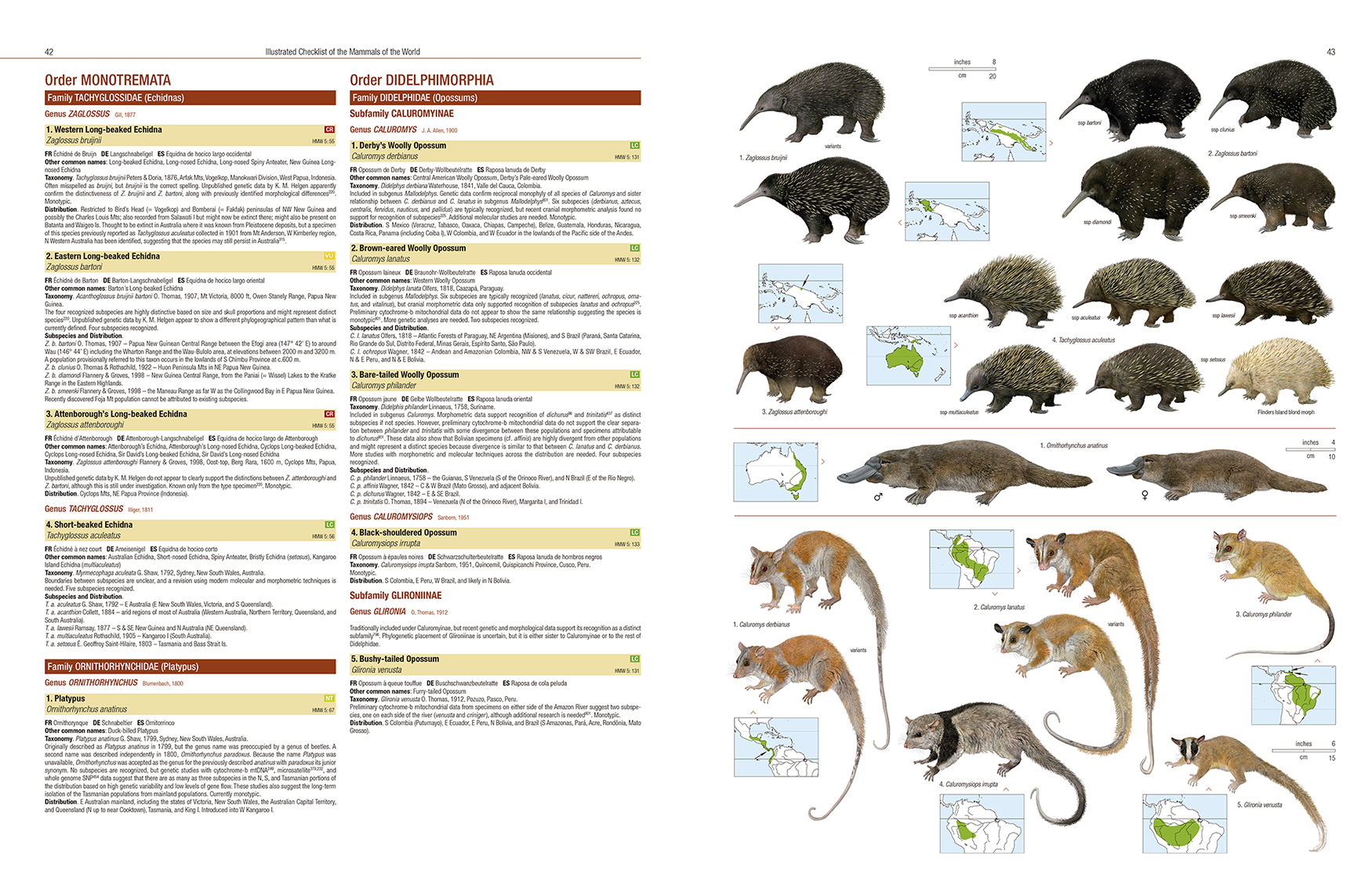
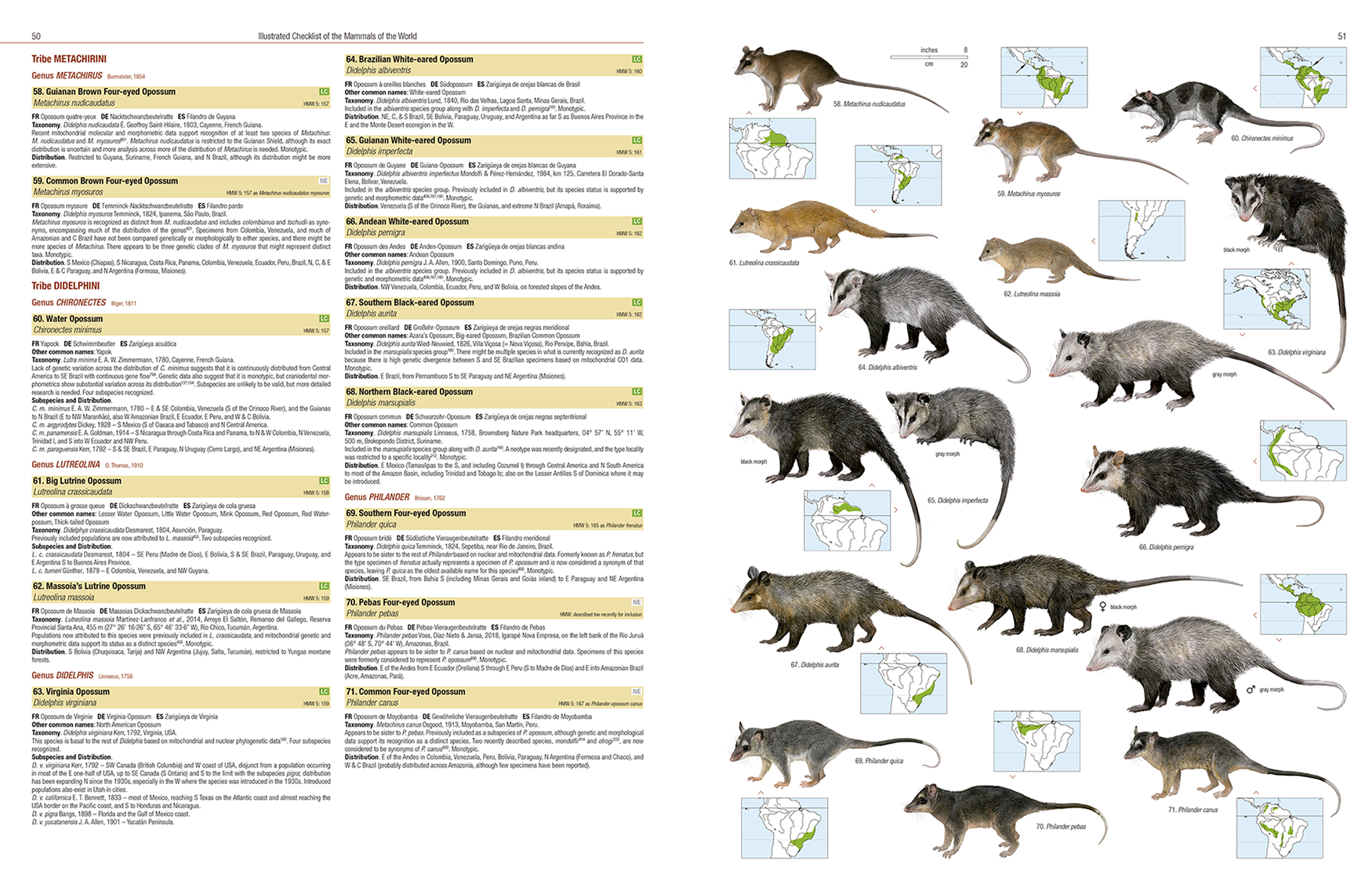
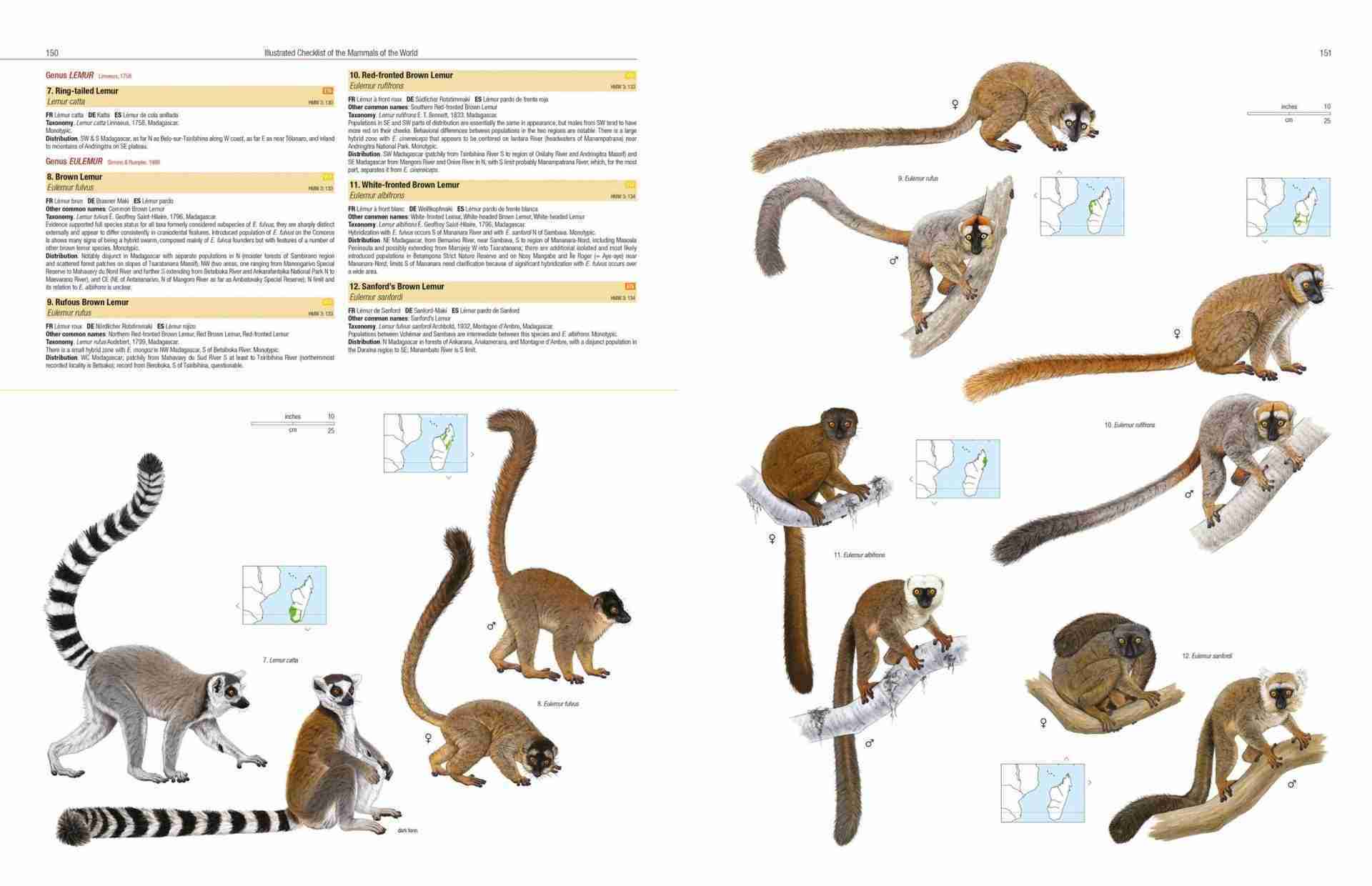
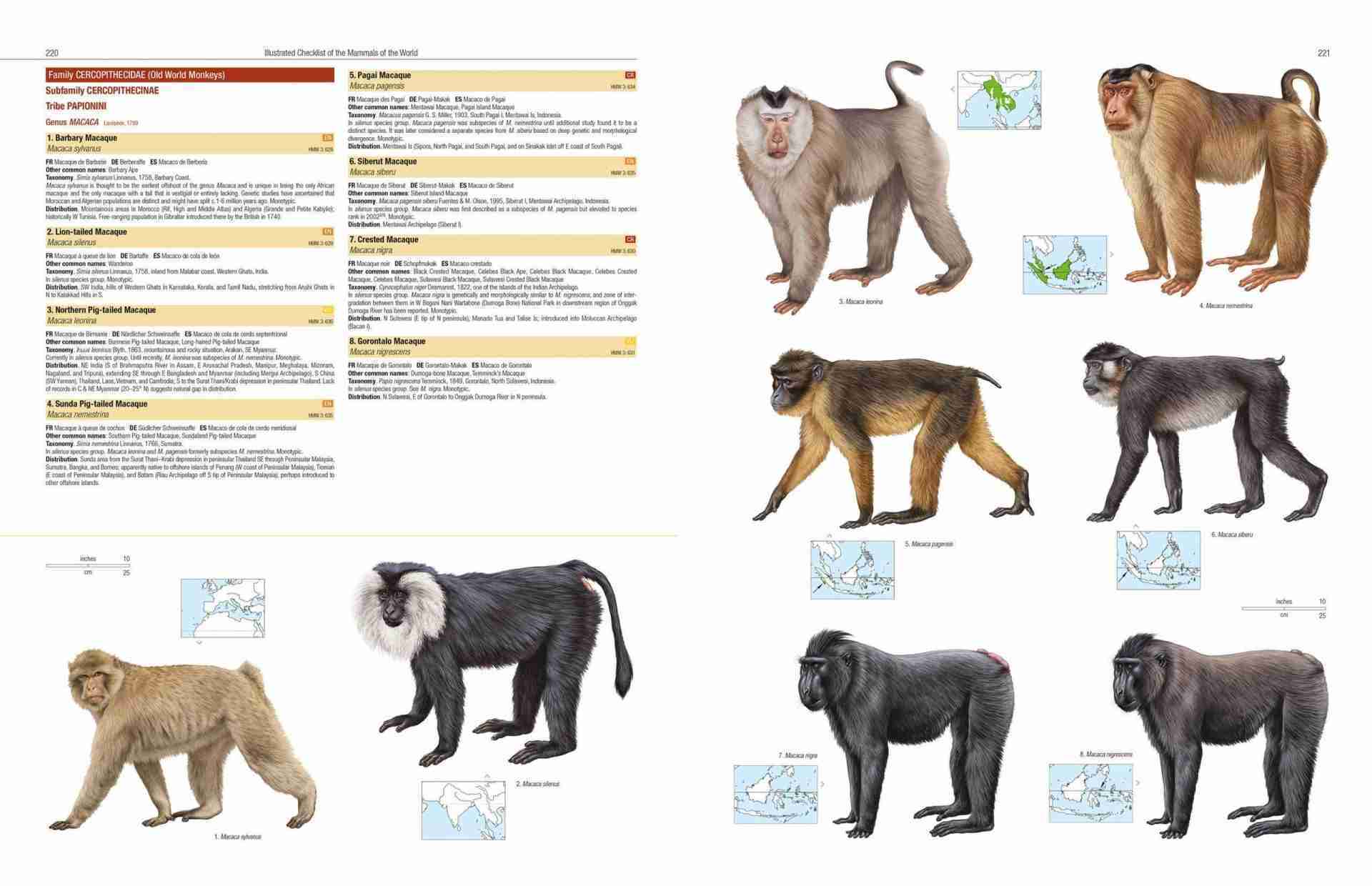
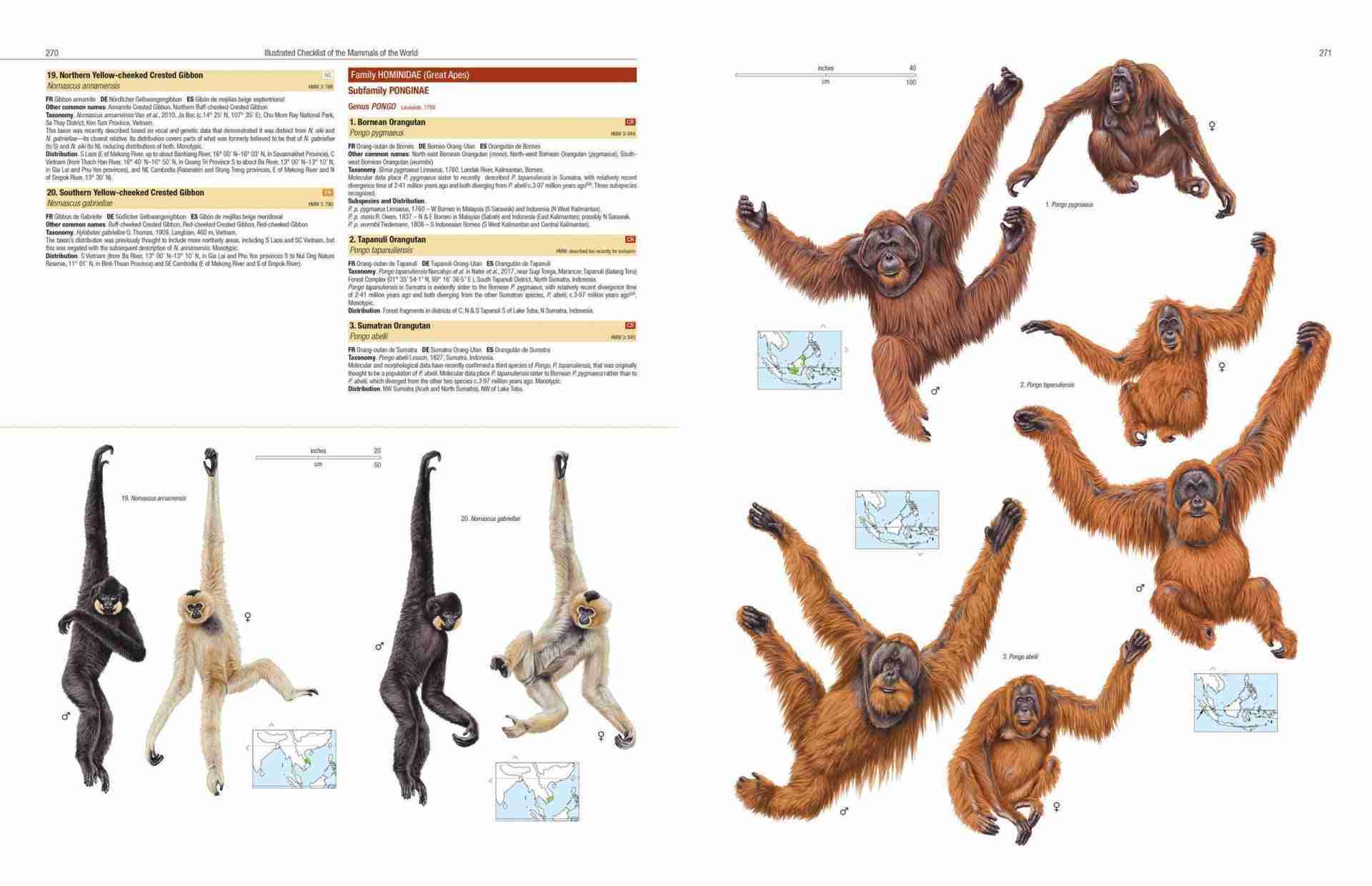
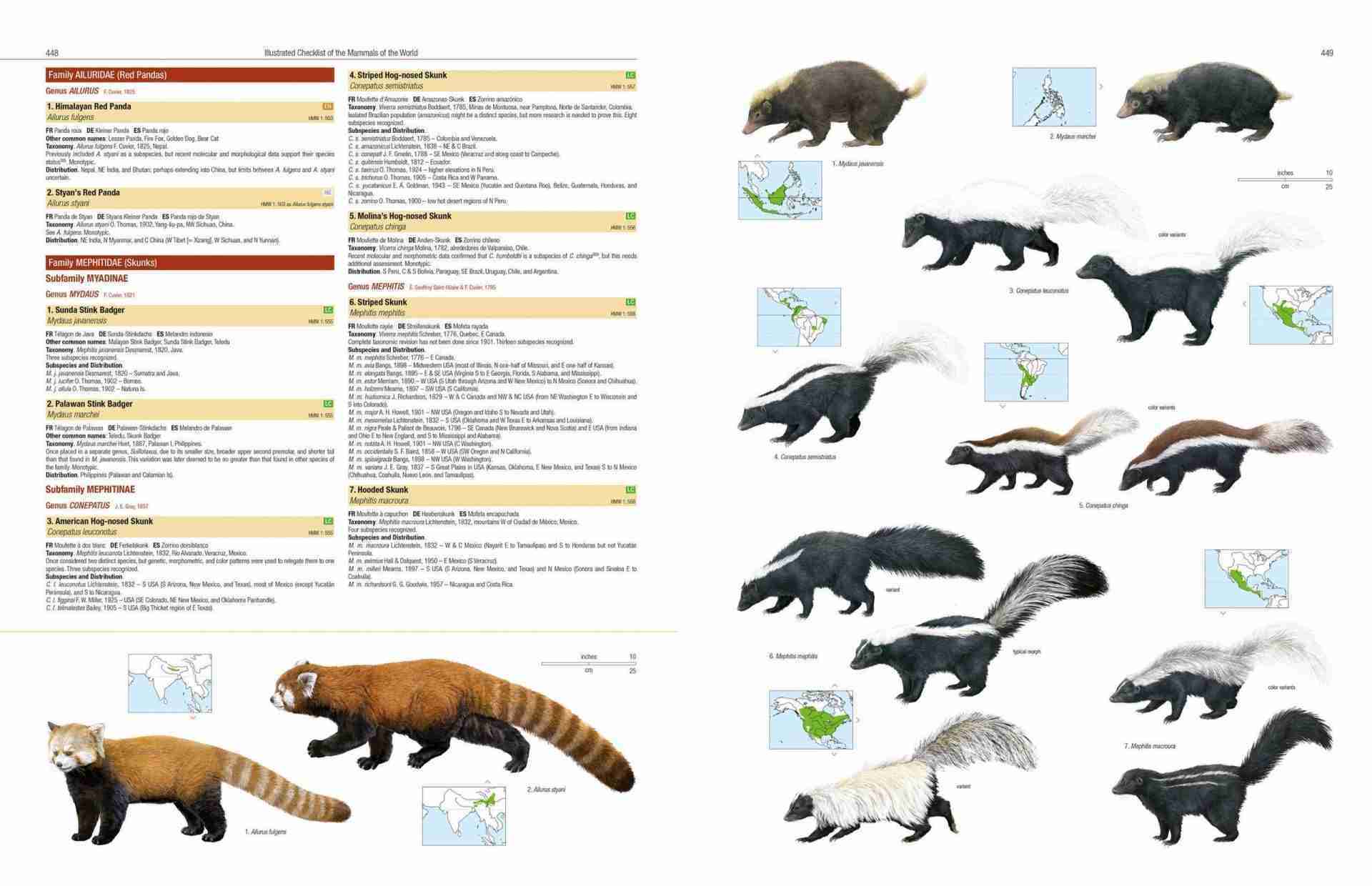

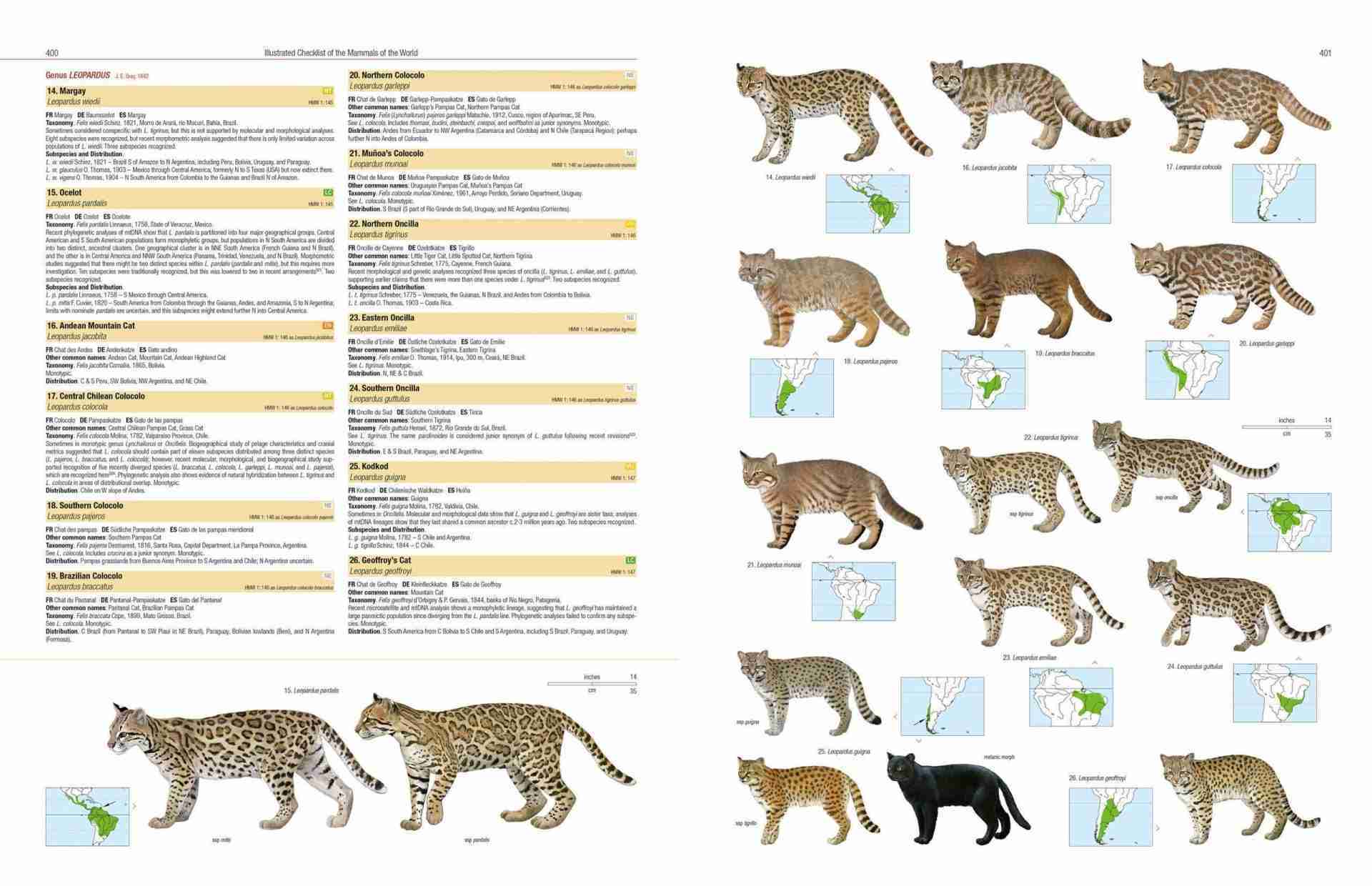
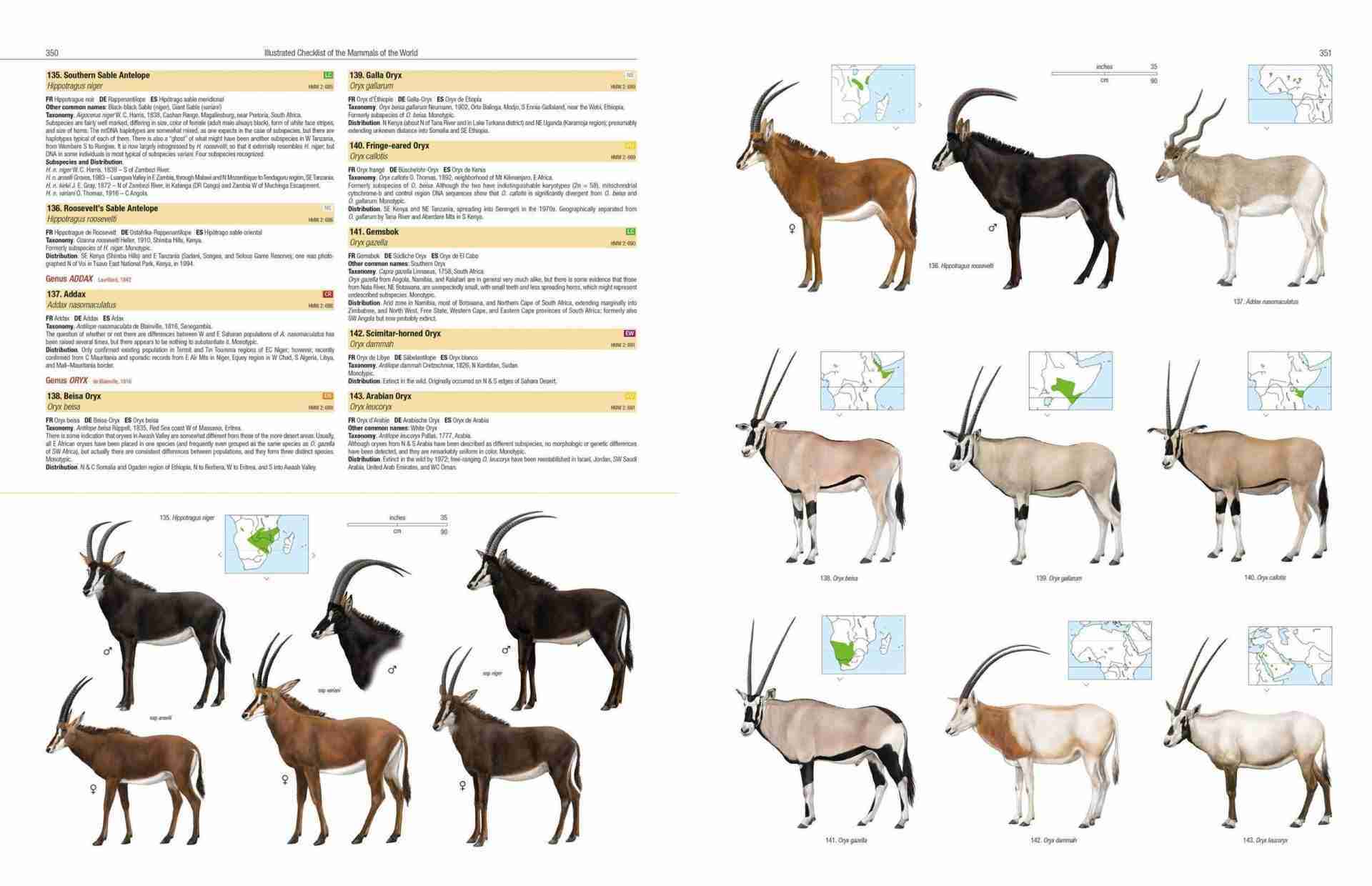
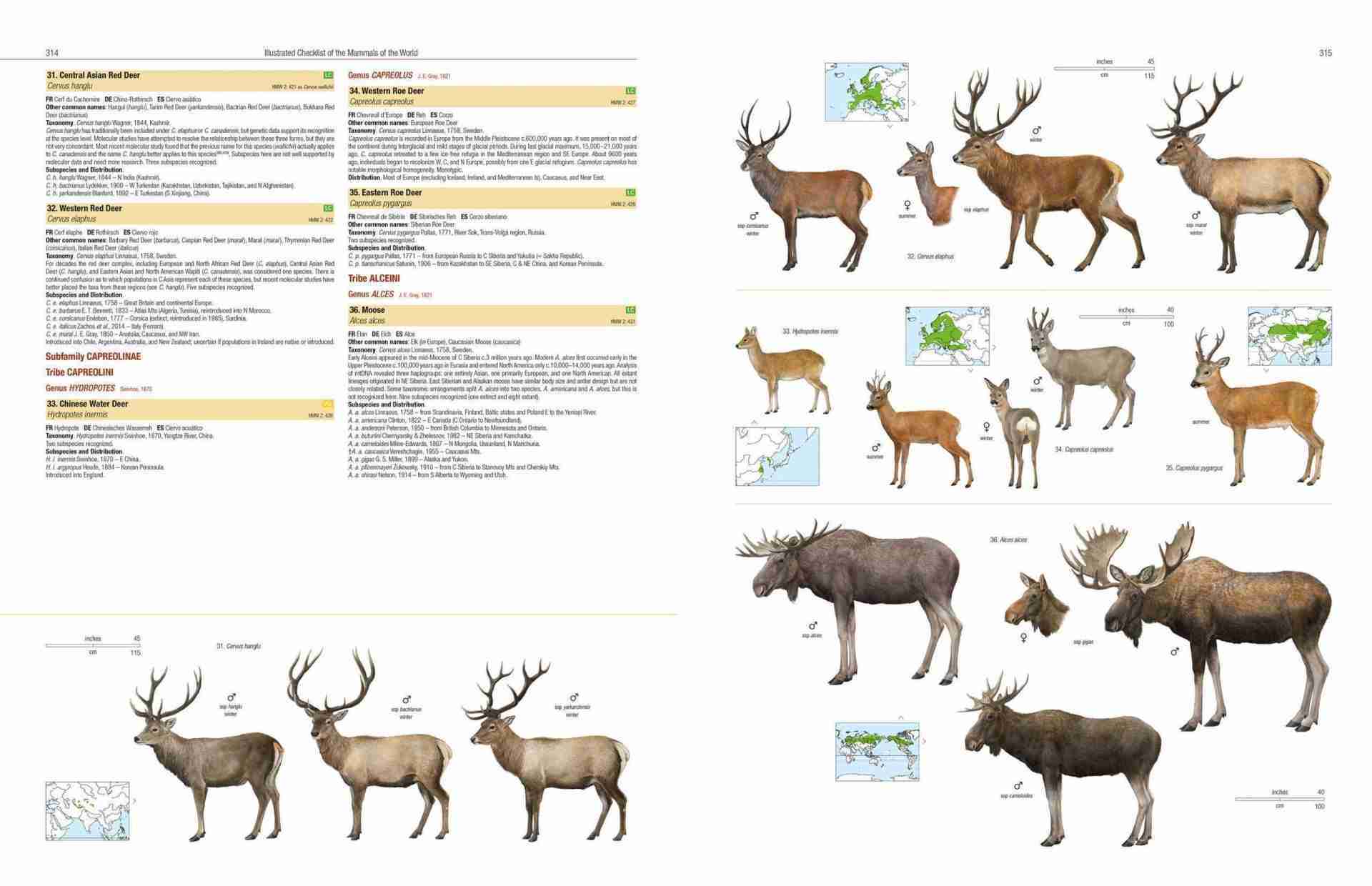

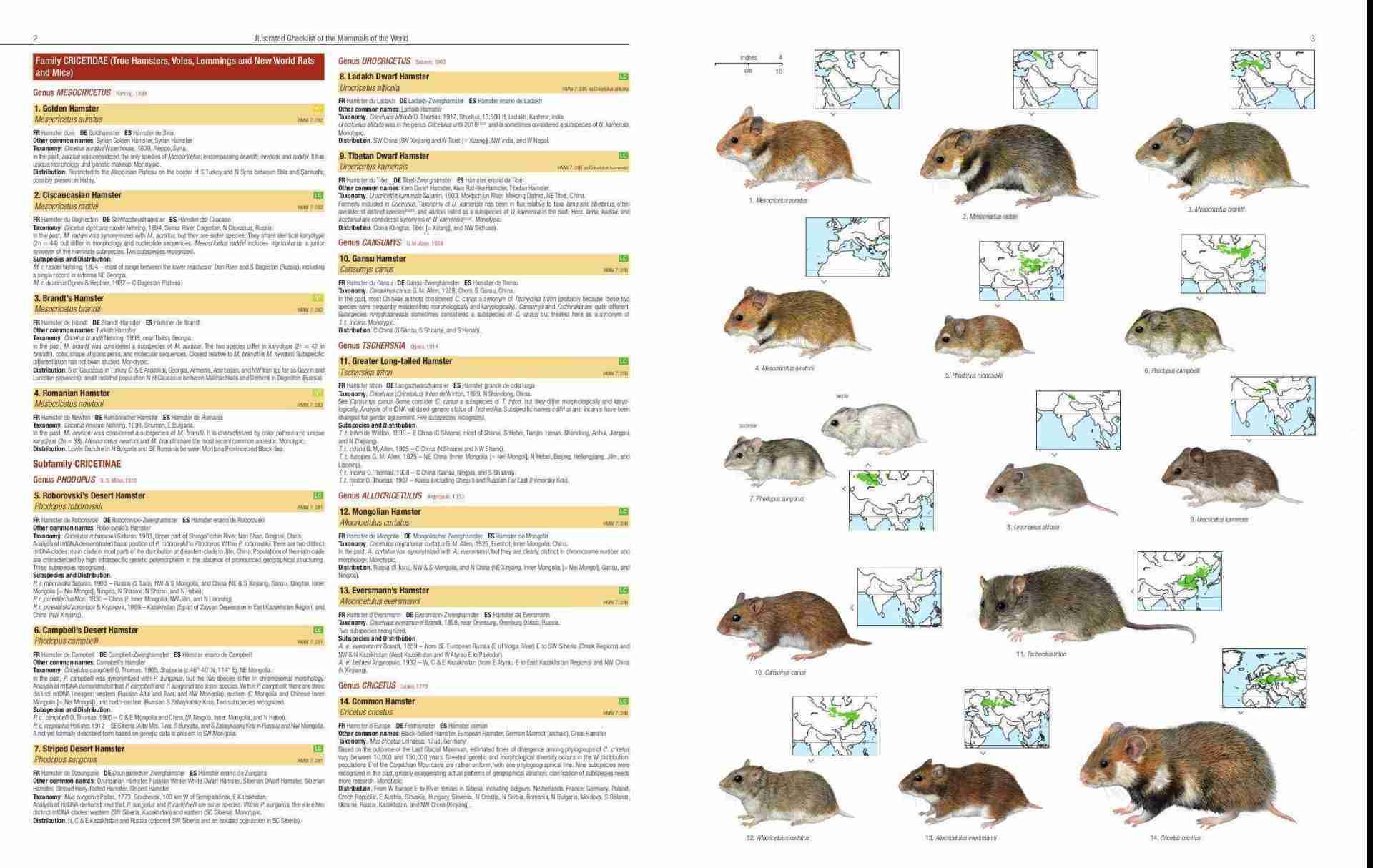
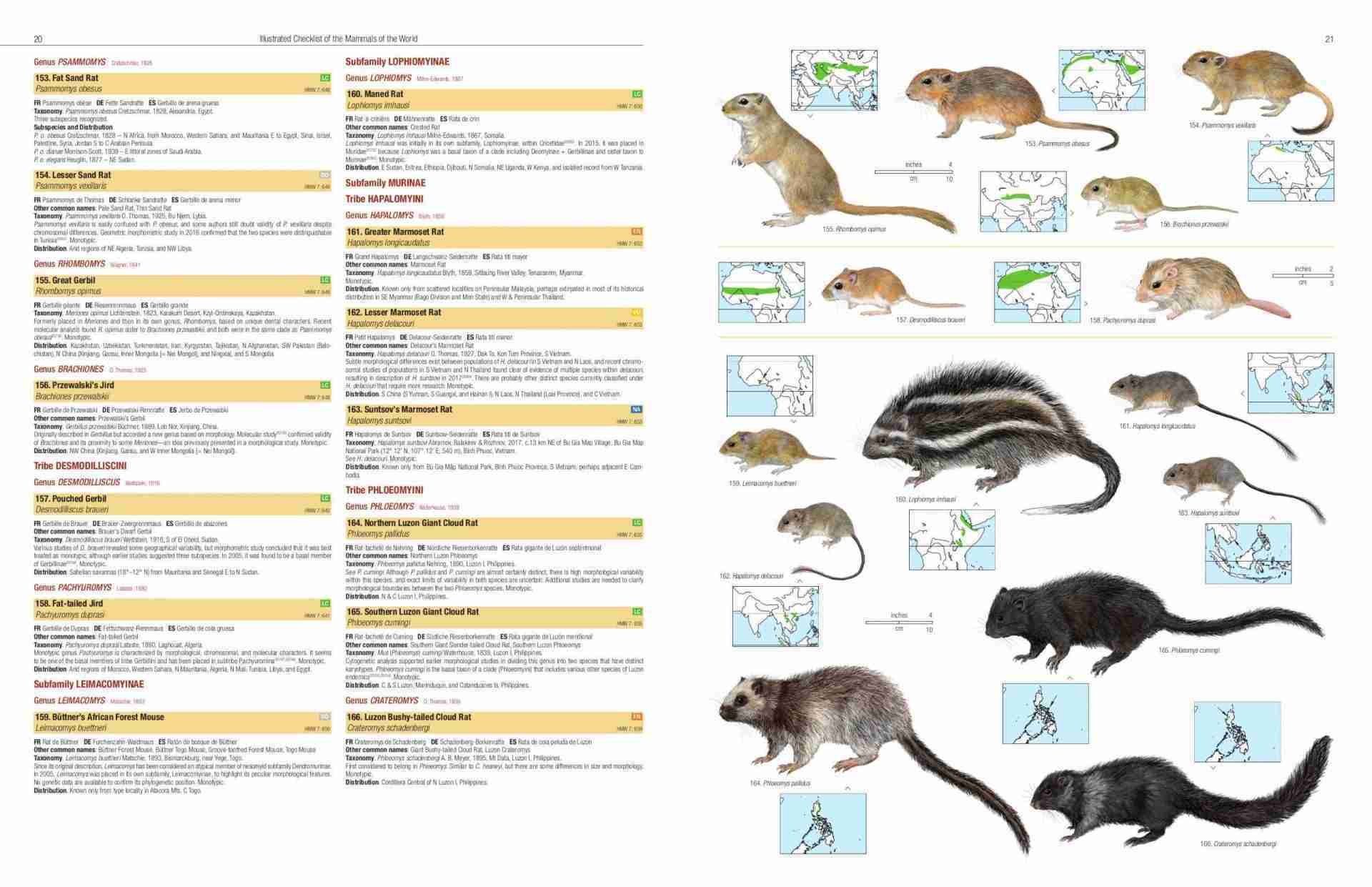
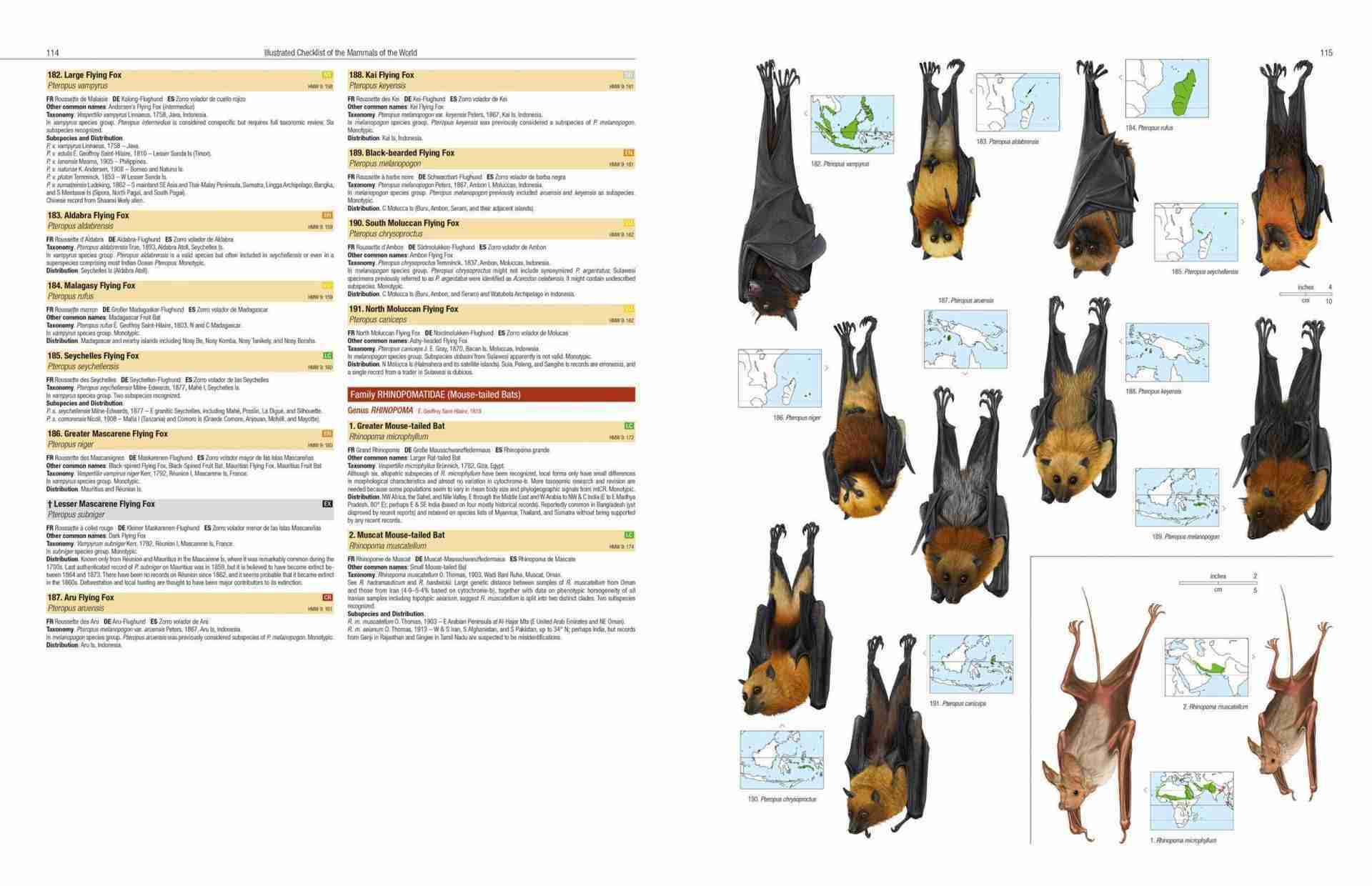
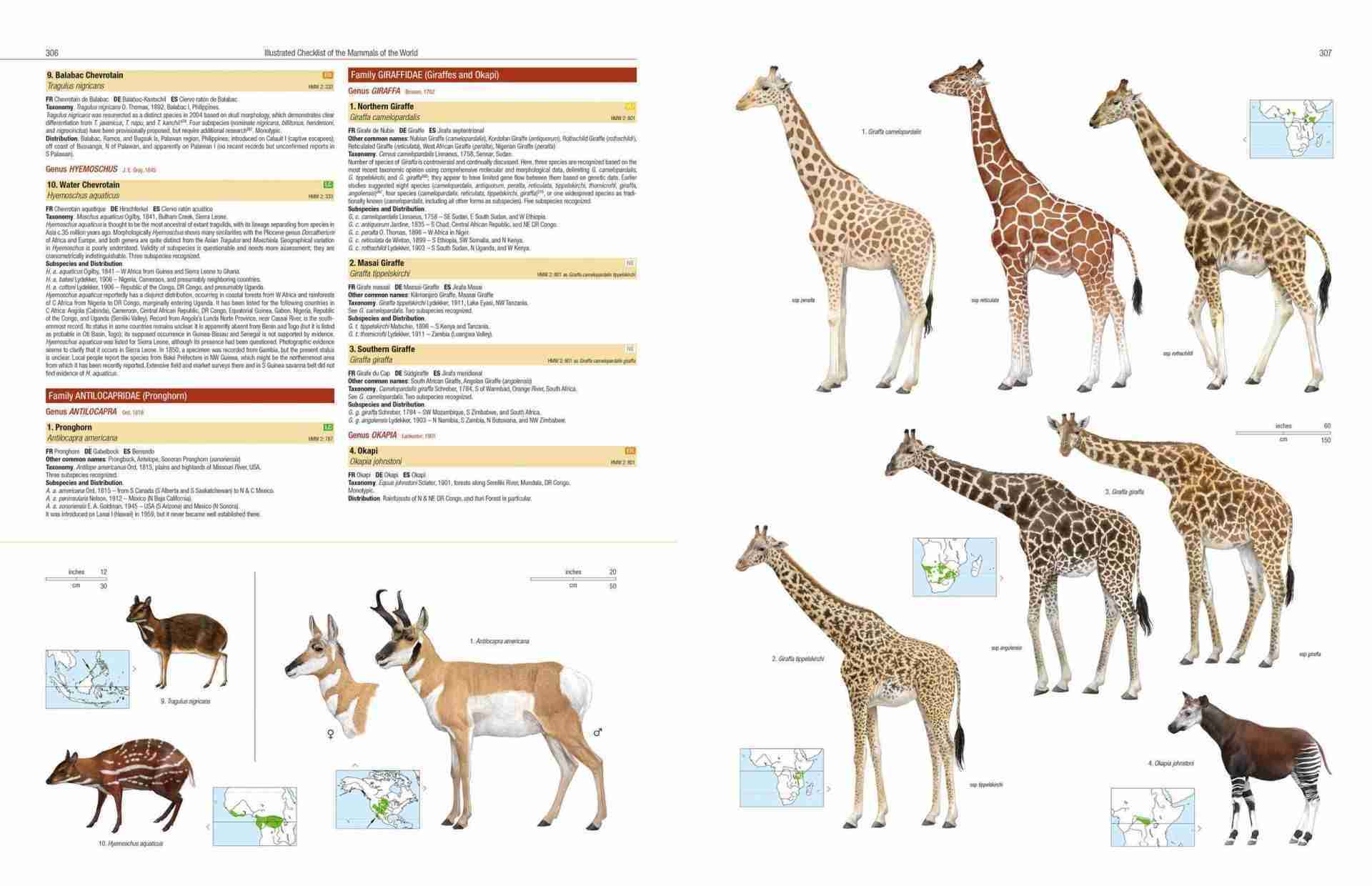
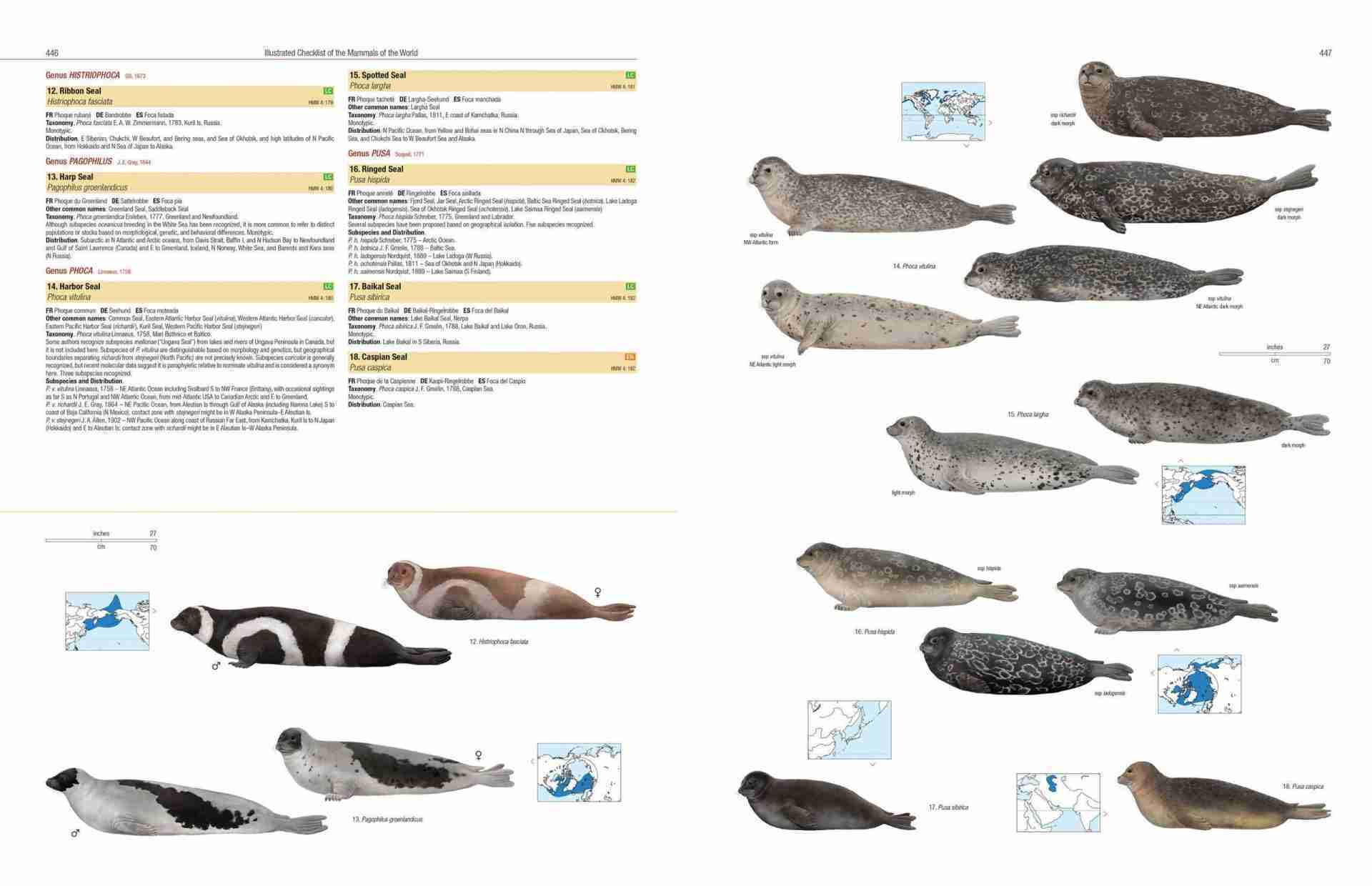
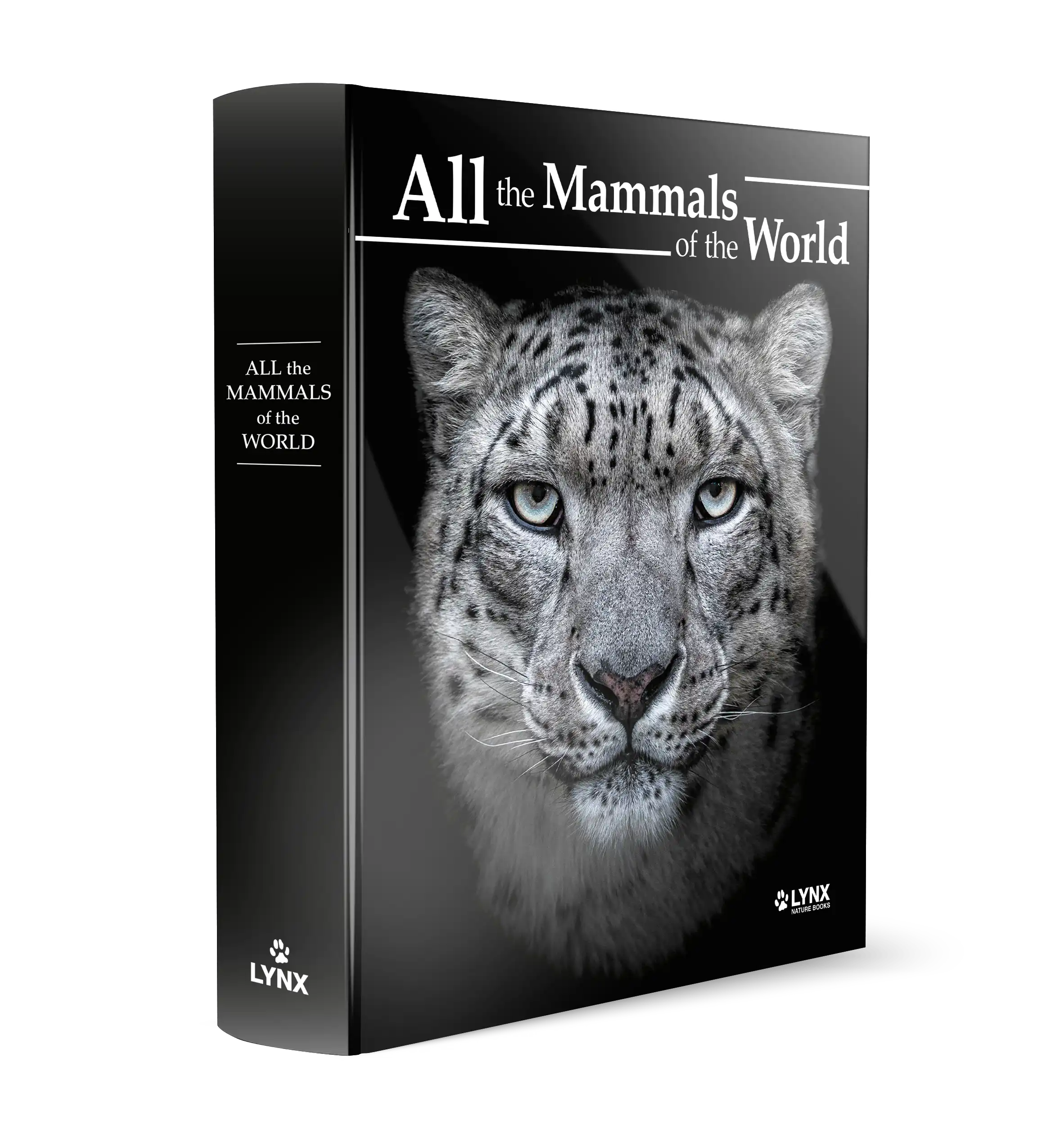
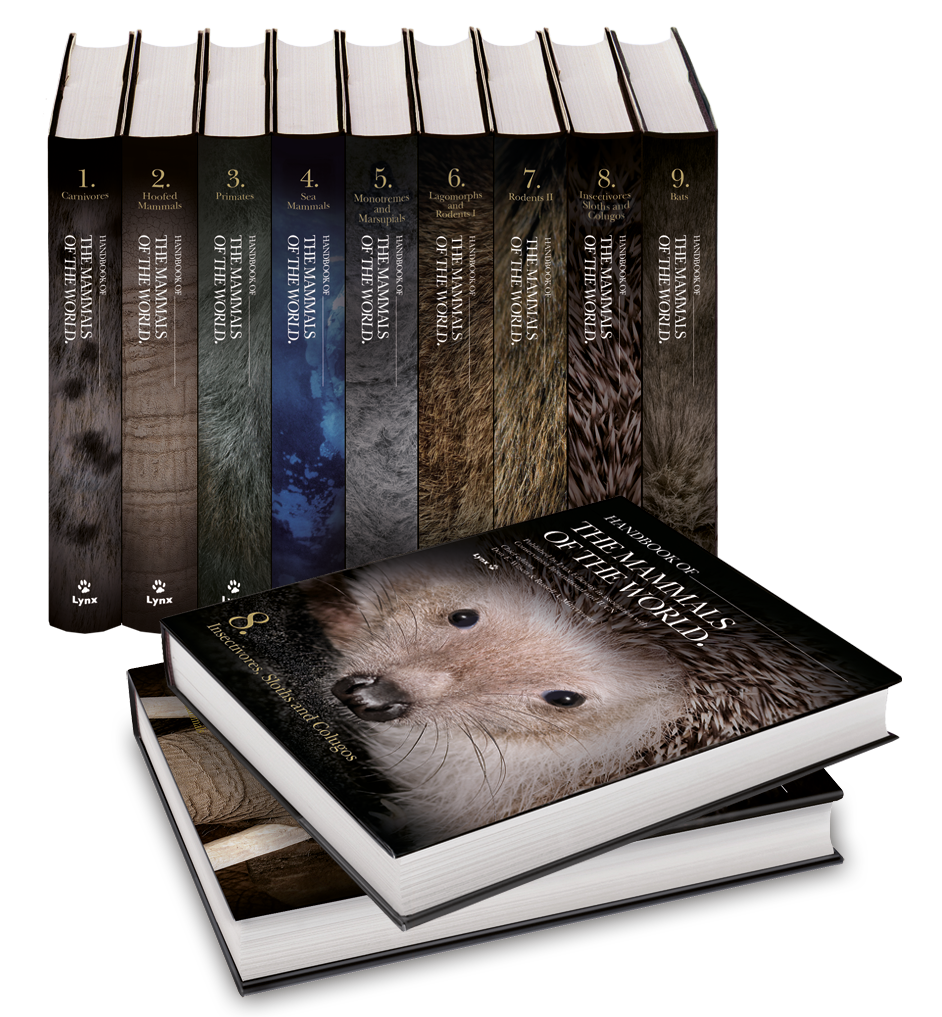

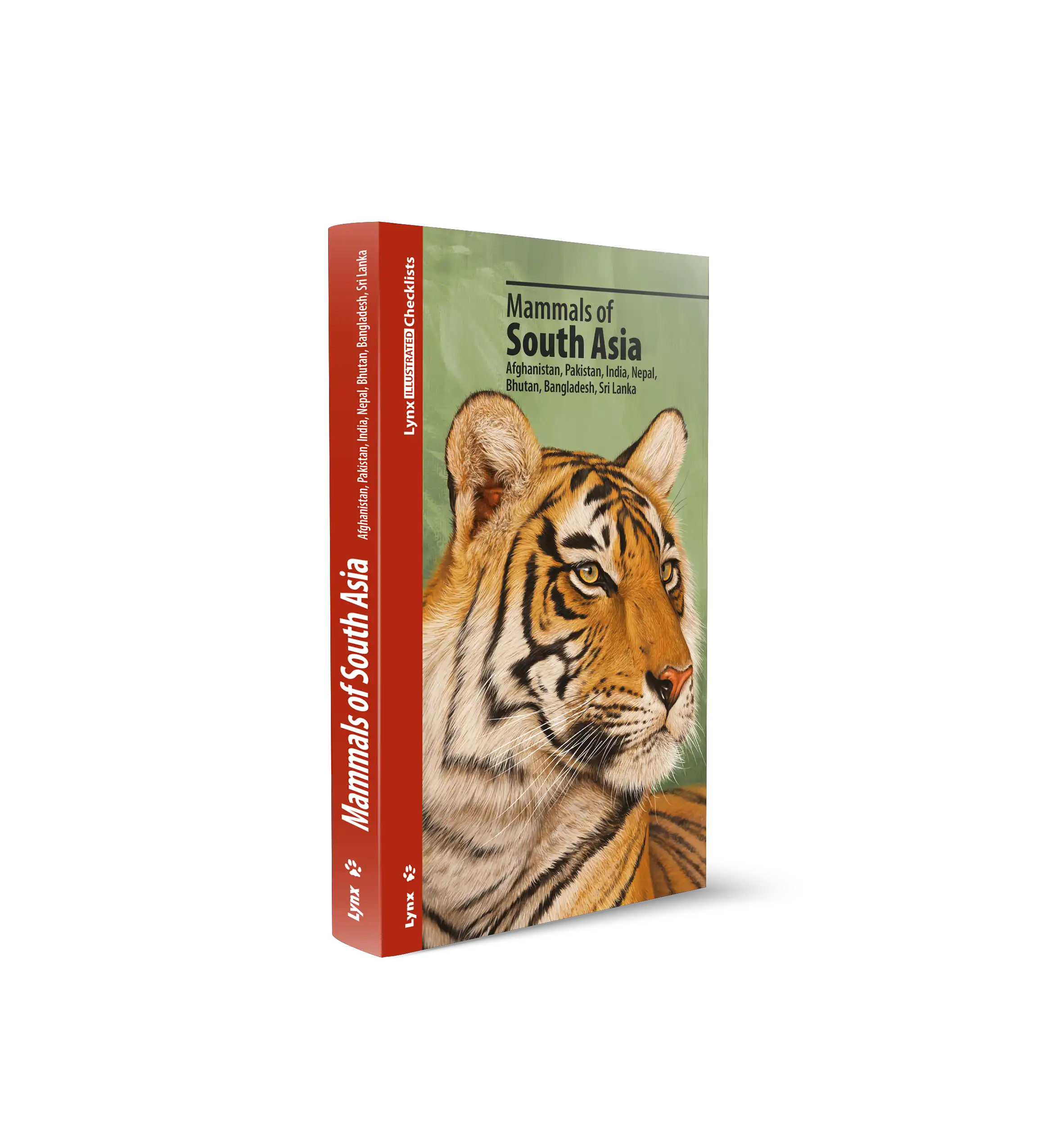
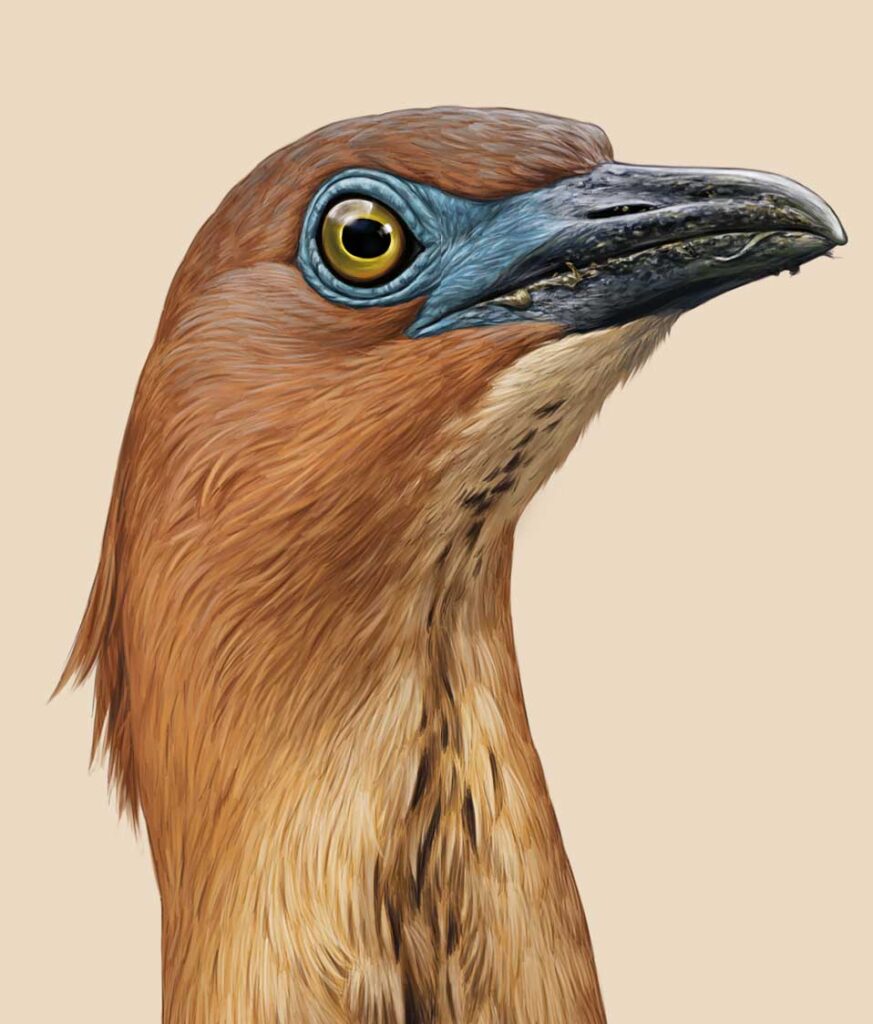
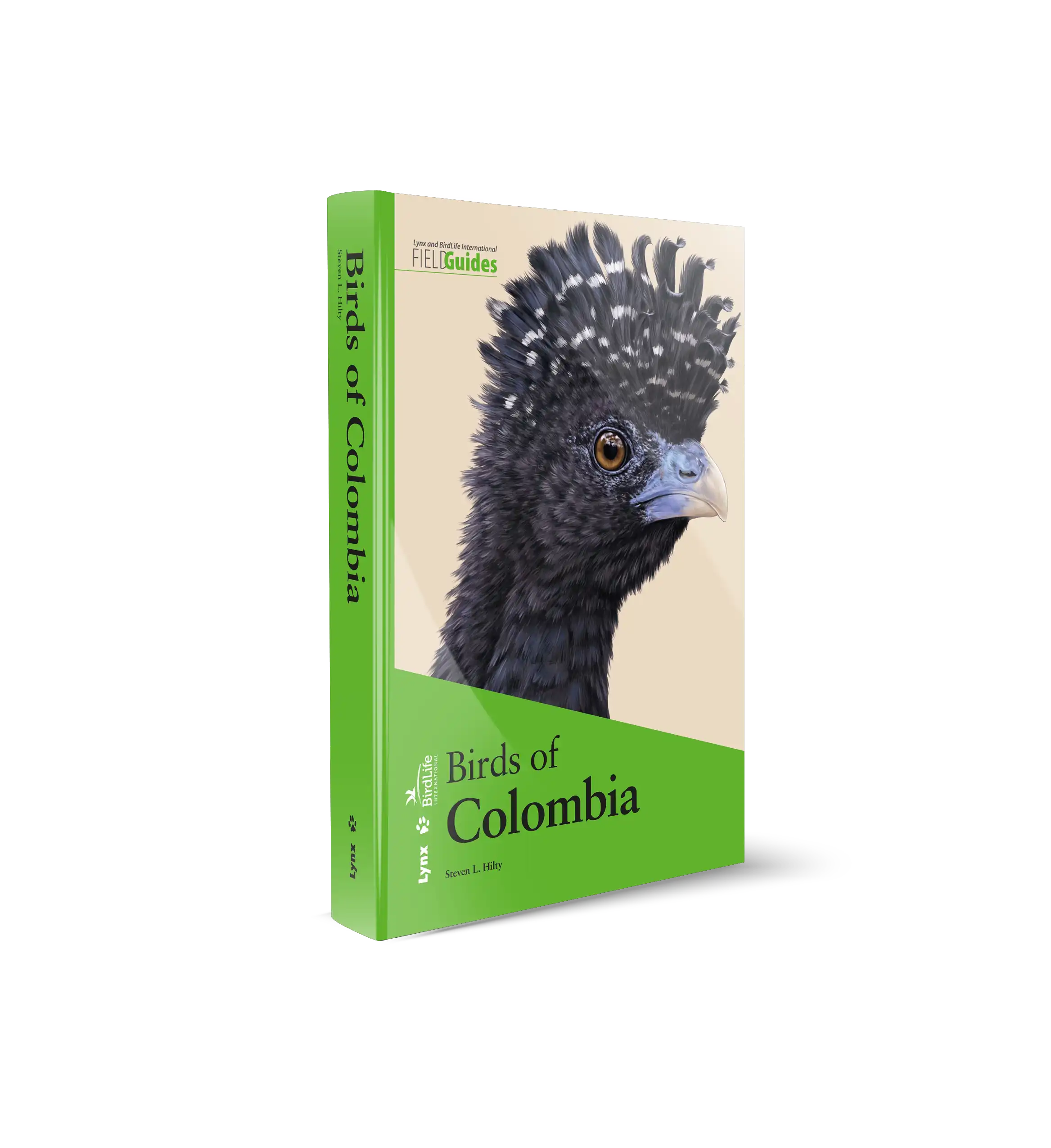
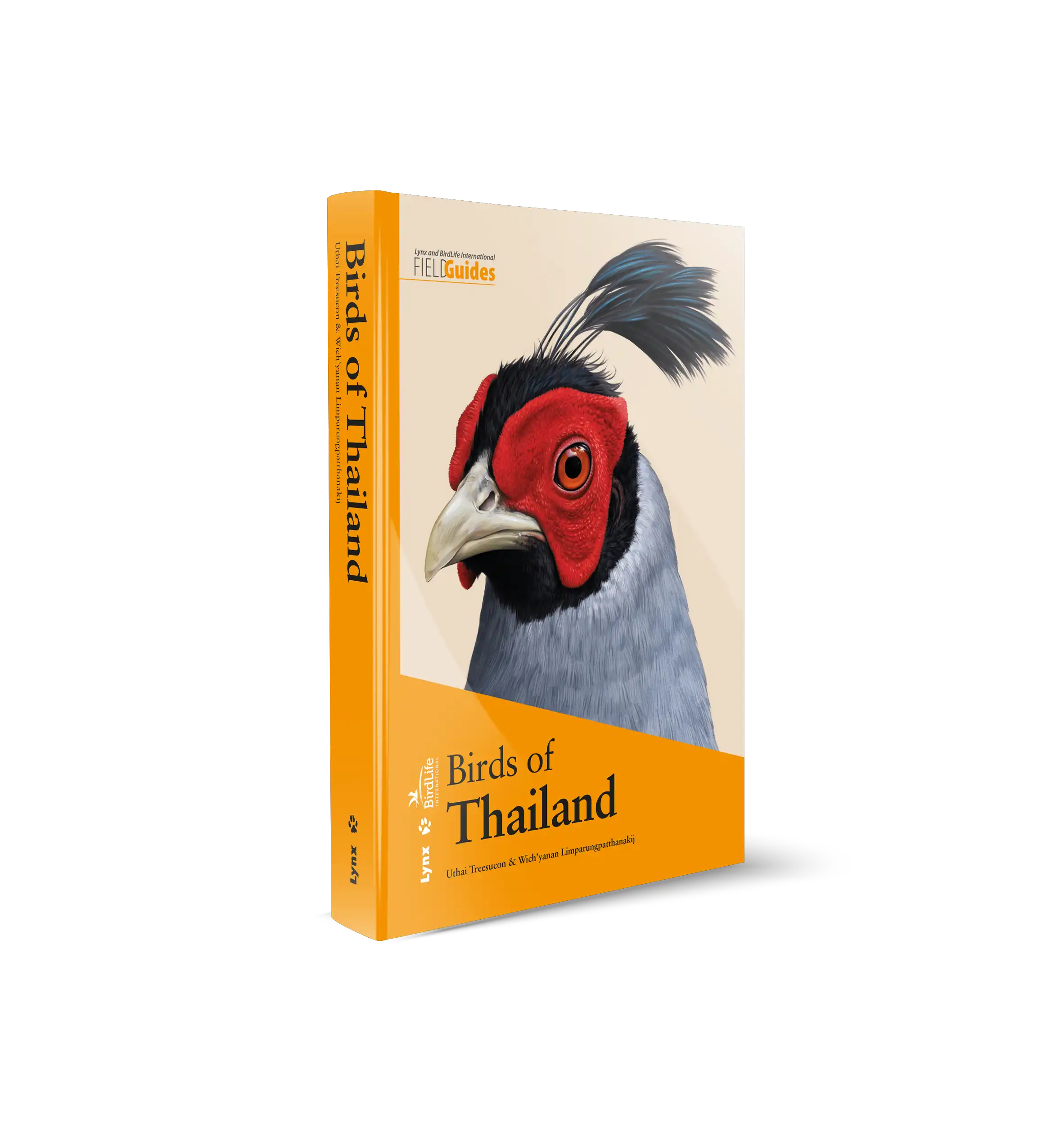
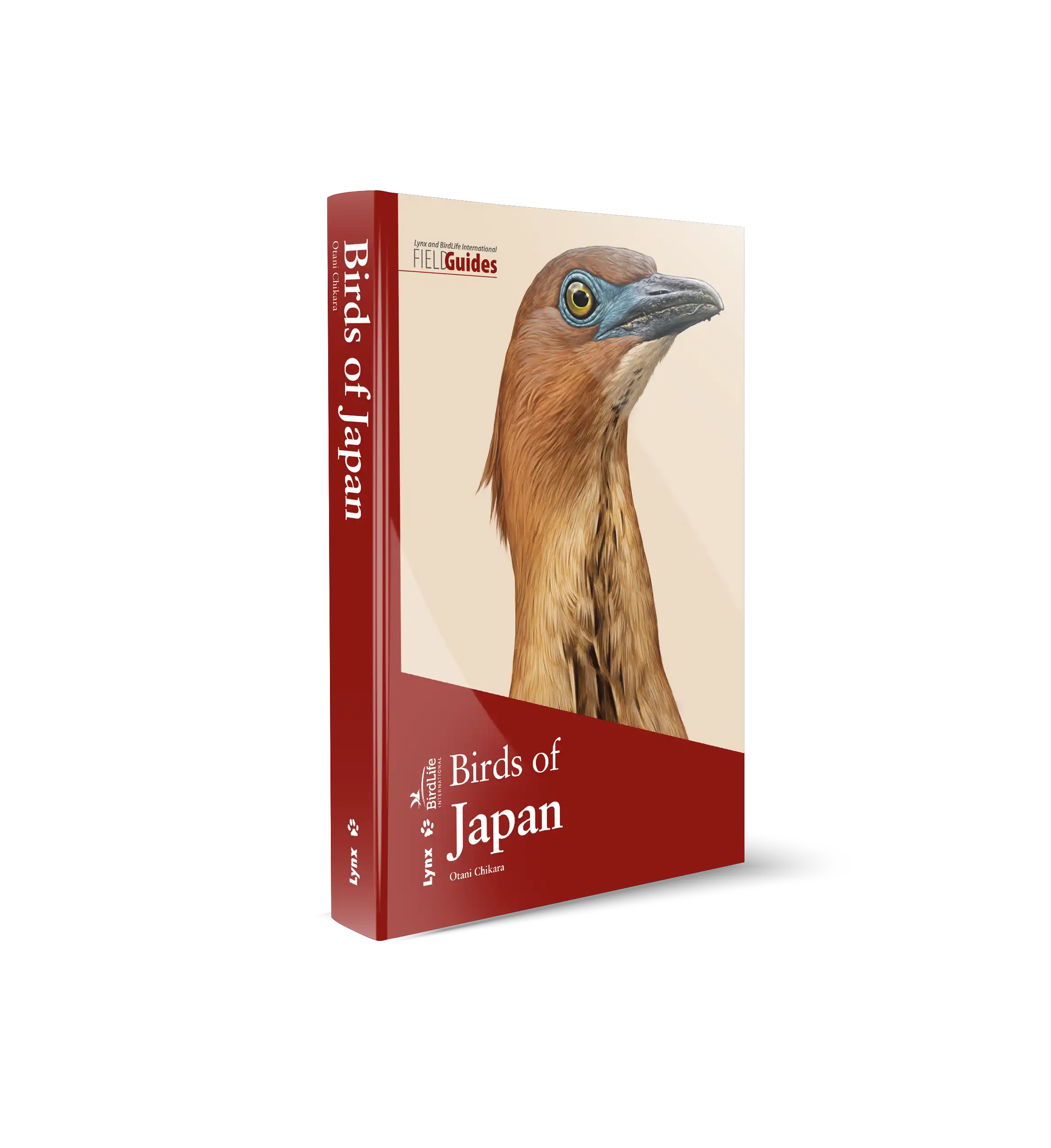








 Copyright 2026 © Lynx Nature Books
Copyright 2026 © Lynx Nature Books
Hans (verified owner) –
Excellent books to discover the rich world of the complete species of mammals from all around the world.
Terrageo (verified owner) –
Another great publication. These two volumes will get a lot of use in the next few years. Appreciate the breakdown into two volumes of reasonable weight. A great way to quickly check potential species present. Some of the species splits will probably lead to discussions as in the HMW, but personally I’d rather see all identifiable taxa identified as is done here. Thanks to all the Lynx team for continuing to provide such useful tools. Cheers. Eric
Mark (verified owner) –
These books are truly great. It is incredibly valuable to see the richness of the mammalian world, and the necessity to protect it. A great number of ‘new’ species has been described, some of them hiding in plain sight as so-called cryptic species. I am sure that anyone with an above average interest in the natural world will be able to appreciate these books for years to come.
Rudolf van der Schaar (verified owner) –
The most important and necessary innovation compared to the 9 Mammal volumes are the improved Primates images.
Hans Moolhuizen (verified owner) –
These books are an absolutely fantastic addition for everyone who’s interested in mammals.
Magnificent illustrations, dozens of new species described and pictured, new illustations of (all?) the primates, updated taxonomy etc.
A very usefull update of the HMW volumes but if you don’t own these still a great buy.
Thijs (verified owner) –
Fantastic books, (mostly) beautiful drawings (although some monkeys like Gibbons, Orangutans and Uacaris look very silly without a branch in their hands), many new species, useful distribution maps.
I wanted to give 5 stars, but after the promising foreword I was very disapointed to find out there’s one mammal missing, one primate: Homo sapiens. I truely cannot believe this crucial mistake! I found no explanation in the books. Is it because of some religion (again)? I can’t think of any other reason.
The best way to conserve the natural world and it’s mammals, is to finally start teaching all people we are primates too: just one of the many animals!
Elisa Badia –
The Illustrated Checklist of the Mammals of the World is based on the Handbook of the Mammals of the World series and it follows the same criteria. In the introduction of HMW Volume 3, devoted to Primates, the following paragraph explains why Homo sapiens is not included in the series:
“Last, but certainly not least, we have ourselves, Homo sapiens, a single species that occurs on all continents except Antarctica, and is the most adaptable, successful, and destructive mammal on Earth. Given that we would need volumes to describe the amazing behavioral, ecological, cultural, and technological diversity of our own species, we have decided to exclude it from this volume, and to focus instead only on the non-human members of the Order of which we are a part.”
Lea Blättler (verified owner) –
Great book, there are two or three things that you could make better:
1. We miss the country borders in the maps. It would make them much easier to read in details. In the book “All the birds of the world” there are borders in the maps. Why not in the mammal book?
2. I prefer, having the drawings in the same order as the text.
3. My husband would love to have an index in both books but we understand that this would make the book even bigger.
Thank you, for publishing such a compact and affordable book.
Gehan de Silva Wijeyeratne –
This boxed set of two volumes represents yet another scientific and publishing milestone by Lynx Edicions. For the first time in human history, every known extant mammal species is illustrated in a two volume set. To pick the two volumes up and to know every mammal described to science is in them, is something special. It is hard to think of anyone with a deep interest in mammals who would not want to have these two volumes. For someone who writes and photographs natural history field guides, it is an invaluable reference. I just wish this updated taxonomic work had come out earlier and made my last project, ‘A Naturalist’s Guide to the Mammals of Sri Lanka’ a little easier.
The ‘Illustrated Checklist of the Mammals of the World’ (ICMW) is a continuation of over a decade of effort that preceded it with the ‘Handbook of the Mammals of the World’ (HMW). The HMW was published in nine volumes between January 2009 and October 2019; a span of ten years. The HMW was a massive collaborative effort involving a large team of expert authors and artists working with a fair sized team of editors and administrative staff. The ICMW draws heavily on the original text and artwork of the HMW, but has been updated as a number of significant changes have taken place in both the number of species described as well as in the taxonomy of mammals.
The species are arranged in a phylogenetic order which represents their evolutionary history. Therefore, it becomes apparent that whales and dolphins are more closely related to deer than horses are to deer. Mammal systematics are discussed in the introductory pages and we learn that the book leans towards a Phylogenetic Species Concept. Volume 1 covers Monotremes to Rodents and Volume 2 covers Eulipotyphles to Carnivores. The ICMW is not just a catalogue of pictures executed to a high standard. There is brief text facing each plate. The text for the species accounts is divided into Orders, Families, Subfamilies, Tribes and Genera. The families are in white text against a shaded bar allowing for easy visual navigation. The front and back inside covers have a visual index to each of the families containing the page numbers as well as the number of genera and species. The text for each species summarises its taxonomy and distribution. Where subspecies are present, the distribution is described at subspecies level. English, French and German names are provided with alternative common English names. The IUCN threat category and the reference to the HMW volume and page number are given. The plates have a distribution map next to each species, with some mammals’ distinctive subspecies also being illustrated.
Much of the design of the book follows the design principles developed in other Lynx titles to enable the reader to navigate and find information easily. However, I am very surprised that unlike in the two volume ‘Illustrated Checklist of the Birds of the World’ and the recent ‘All the Birds of the World’, they did not include the common English name in prominent font next to the scientific name. This does improve the aesthetics of the plates. Many people will find it pleasurable just to browse through the plates and feast their eyes on the remarkable diversity of mammals. However, it is a tad irksome to keep glancing at the text opposite the plates to look up the common name. Another departure from improving the popular appeal of the book, is the cover. The cover uses an evolutionary tree which undoubtedly captures the essence of what this publication is about. The downside is that it is rather ‘techy’ and lacks the mass appeal (and hence sales potential) of a stunning cover image as was the case with ‘All the Birds of the World’.
I can only speculate that it may be a conscious decision by the editors and publisher to signal that this is a serious taxonomic work. Perhaps a popular version, an ‘All the Mammals of the World’ is yet to come. The taxonomic notes for each species are undoubtedly a key strength of the book. Let me give an example. Because I write field guides, I have a practical need to understand the current status of the Golden Jackal Canis aureus which has been split based on molecular work, from the African Golden Wolf Canis lupaster. The concise text (with citations) coupled with the distribution maps makes it all clear very quickly. The taxonomic notes on the African Golden Wolf refer to terms such as ‘nomen dubium’, type specimen and nomenclatural concepts such as the oldest available name. These are not as forbidding as they may seem and the section on nomenclature (page 33) in the introduction explain this clearly in plain language. This section even has the technical terms in bold face to help people who are new to taxonomic terminology. The introduction (pages 23 – 40) is written well, starting with a history on mammal record keeping and an entertaining anecdote on how Oldfield Thomas went on to describe 927 species which are still valid today. The heavily referenced discussion on mammalian phylogeny can be skipped over by the casual enthusiast. But there are good and accessible sections on speciation, species concepts and biogeography. Important taxonomic concepts such as whether a group is monophyletic, paraphyletic or polyphyletic is explained clearly with the use of diagrams.
Presenting it in two volumes helps with handling, but with a combined weight of 6.4 kg, each volume is still rather heavy and not one you would carry in your day pack to read on the commute to work. With over 7,150 illustrations describing 6,554 species in 27 orders and 167 families, this is a remarkable work. Volume 2 in the end sections contains a listing of key references (pages 467 to 477).
With small mammals such as rodents, you expect point endemics confined to very small geographical areas. However, browsing through the book you notice that this can be the case even for large ungulates such as the species of Topi found in Africa. I had not quite appreciated that the Serengeti Topi I had seen in Africa was so range restricted. The illustrations (mainly by Toni Llobet) are drawn in the photo realism style. They are pleasing to people who have spent a lot of time watching mammals in the wild and like accuracy. However, it is important to be mindful that this is an illustrated checklist as it says on the cover. It is not a field guide and with many of the smaller mammals and the much larger cetaceans, for different reasons, the illustrations in this book cannot suffice as a field guide. Additional illustrations, photographs and text are needed for a field guide. That of course does not diminish the joy of being able to have all the world’s mammals in front of you and to idly thumb through, discovering mammals you have never seen before or whose existence you had not been aware of.
Many of the world’s mammals are small, nocturnal species (and often with restricted distributions). For example, the rodents include two families, the Cricetidae (true hamsters, voles, lemmings etc.) with 807 species and the Muridae (true mice and rats, etc.) with 851 species. The Soricidae (shrews) have 454 species. The 21 families of bats have 1,423 species. These examples add up to over 3,500 species or a little over half the world’s species of mammals. A book that only focuses on mammals that wildlife tourists are likely to see may only contain thirty to forty per cent of the world’s species. Therefore, publications such this which are a complete inventory are a reminder not only of how diverse mammals are, but the challenges ahead to conserve wild places for mammals in a race against extinction.
Valter Moura –
Great work!
What is the next handbook series? Reptiles and amphibians of the world??? It will be amazing…
Mansur (verified owner) –
The book is considered a summary of the complete series, its showing the geographical distribution with maps of all species (if you have illustrated checklist for birds , it is similar to it), the sequence of order here differs from the series, for example, marine mammals are divided (whales and dolphins) and after many pages (seals), herbivores (vol 2 in The series) is divided here into several parts (distributed in two volumes) about primate illustrated I see it here better than the (vol 3 in the series) and more accurate and logical, but it does not display subspecies as there. There are updates for some species in In various order and families.
In the end, we thank the Lynx for this great achievement, a dream and a reality … and we ask ourselves what is next? I wish fishes!
acharat (verified owner) –
Once again a phantastic work, just like HMW, HBW and the Illustrated Checklist of the Birds of the World. Nevertheless there are a few points that could be better, especially in comparison with the Bird Checklist:
1. Some species / subspecies illustrations are omitted, although they are depicted in HMW (e.g. Chimpanzees, Gorilla gorilla diehli, Llama, Alpaka, Dromedary, etc.). This causes a slight feeling of incompleteness. But I have got HMW as well, so it is not so bad for me. But I think someone who buys the checklist only might be a little disappointed.
2. The bird checklist included many illustrations of extinct species, even if their extinction happened several decades or even centuries ago (Dodo, Rodriguez solitaire, Great auk, Passenger pigeon, King Island emu etc.). This was a really great idea and I appreciated it very much. Unfortunately the mammals checklist hasn’t this feature. If there had been only twenty or thirty pages more, all this could have been included.
All in all, although generally a wonderful checklist, the Illustrated Checklist of the Birds of the World is slightly better due to the mentioned points.
Joseph Nicholson (verified owner) –
Lynx knocks it out of the park again with the Illustrated Checklist of the Mammals of the World. As someone that owns the Birds Checklist and All the birds World, I always use them for both my artworks and taxonomy, and Mammals is gonna do just the same, with some great illustrations from HMW and a great summary of the taxonomic history, which compared to Birds, less uniform and oddly understudied with many bird lists that only differ by a few hundred species or so, while for mammals its really only have IUCN which really slow with updates and the ASM Mammal Diversity Database, which is heavy based on the HMW with some updates, so this really is a great taxonomic reference, even if you disagree with some of the lumps or splits, which I assume a lot of people did with the Bovidae and the general following of the Phylogenetic species concept, which is notorious for over splitting when genetic evidence other species concepts aren’t taken into account . While I do have a lot of good to say about the mammal checklist, I do have more critiques that the bird checklists, which a few have be mentioned and will give my thoughts on, which maybe be because of this Pandemic or other reasons.
1. Some of the sizes of animals, the humpback whales compared to the grey whales are the clearest example, which are the same size or slightly bigger in life but tiny in the checklist, which i assume is for space reasons but the grey not being corrected for to compensate for was a little odd and some of the illustrations where printed a little to small to get a good view (Brydes, omura’s common and Antarctic minkies and the Jaguar and Leopards are some examples). With the smaller page count of this series compared to the Birds checklist, being half the size, a few dozens more pages would work well and still be a good sized book
2. Some of the illustrations for the primates were a little odd, and while Stephen D. Nash drawings are great, his style feels still a little out of place alongside the new primates ones, and they kept his tamarins illustrations which feels a little out of place with the new ones that fit more coherently with the other illustrations within the book.
3. Keeping the Extinct and Domesticated animals without illustrations while the Bird one does feel a little odd, and some were already illustrated for the Marsupial handbook, would have made great additions to a Extinct appendix and a Domesticated appendix with illustrations of some cool recently extinct animals like the Steller’s sea Cow, Aurochs, Bluebuck …even some of the weird giant lemurs from Madagascar would have made a fun addition to the book
4. While keeping homo sapiens out is understandable, I feel like a short summary on the our taxonomic history would have been cool, maybe even some illustrations to show how variable humans are, although not adding them for political reasons is understandable.
Joseph Nicholson (verified owner) –
Lynx knocks it out if the park once again with the Illustrated Checklist of the Mammals of the World. I already own both the Bird checklist and all birds of the world, these are great references for me, for both my own art and quick taxonomic references, and the Mammal checklist is no different, with great art all throughout the book to show off the diversity of mammals in the same way as the Birds did. I really love looking though all the wonderful illustrations and a short summary of the animals taxonomic history is really useful when you need to check or just want to know a species taxonomic history quick and easy without looking too hard. Unlike Birds with Major species lists that are generally very consistent with each other with only a few dozens species separating them, the only other mammal list not based on HMW is the ICUN Red list, which can be very slow to update, so makes this book a very good refence even if you may disagree with the some of the choices they went with, like retaining the controversial Bovidae taxonomy from Groves and Grubb, 2011 and a general use of the Phylogenetic species concept, which can be prone to over splitting due to minor physical differences when not coupled with genetic or any other lines of evidence but the small summary’s with different interpterion’s explained this so this does not bother me much, and even if you don’t agree with splits still holds a lot of useful information. While I have so much good to say about this one, This one seams to be a little more lackluster than the Birds checklist, which ill mention here, but overall pretty minor and some have been pointed out but I want to give my thoughts.
1. Some of the sizes of the illustrations are a little small both in terms of the size comparison (The grey whale and humpback whales are the most obvious example, only being half the length of the grey while they get to very similar lengths or even slight longer in life ) and in terms of there print size (The Leopard/Jaguar page and the part with the Brides/Omura’s/ Common minke and Antarctic minke are obvious example ). with both these books being smaller than the Bird checklist, a dozen more pages to fit them in slightly better would have been a good idea.
2. The new primate illustrations are all wonderful, the great ape ones in particular are incredible, but some subspecies where left out (chimp subspecies/ G. g. diehli) and some of Stephen D. Nash’s illustrations were kept for the tamarin’s which are good but don’t really fit with the style of the rest of them, would have been awesome to have them redone too, but I assume a time constraint or Covid-19 may have impacted that.
3. Leaving Homo Sapiens out was a bit of an odd decision, and while I think their exclusion from HMW makes sense due to all the information and focusing on the non human primates, having them in here with maybe a couple illustrations in our own incredible variations between our own species, a small summary of our taxonomy, maybe even mentioning our hybridization with other species like Neanderthals and Denisovans, helping bride the human animal gap and having us with our relative’s to compare
4. The Bird checklist had a wonderful appendix with Extinct species of bird lost to us over the last 500 years, yet the Mammal Checklist does not, it still mentions them but there’s no illustrations to be found which is a little disappointing . Having a nice painting of a Steller’s Sea Cow, Aurochs, Bluebuck, all those lost Caribbean rodents and solenodons, and maybe even the weird Giant lemurs Palaeopropithecus ingens and Archaeolemur edwardsi. The fact these guys aren’t illustrated is a little saddening, and having a small appendix for these extinct animals and even another for Domesticated animals, which were also sadly missed out, and with the smaller book size as I mentioned would have fit in perfectly .
Thank you very much for reading my review and I hope you the best with getting this book, truly is worth it. now this gets me curious…with there be a similar “New Species and Global Index” Special Volume for the mammal checklist? seams it might be a little short a time for that, since the birds one was over the span of 2 decades, while this mammals was only 1, with new mammals being described slower due to mammals being lest specious, although could be cool to include extinct species into that to make a big enough volume, just my thoughts.
And what of the next Handbook series… I have a feeling it may either be Reptiles or Amphibians, either are more likely to me since Amphibians number less species and could get finished quicker with only 8,000 species to Reptiles 11,000 although Reptiles may prove to be more popular. Really excited to me more in the future form Lynx, Hoping for a NZ bird and mammal field guide and whatever fun books that are planned
Tom Tew –
If I had to take ‘one’ book with me to an imaginary desert island it would be the HMW set and, if they didn’t allow that, then it would be the Illustrated Checklist on it’s own. A stunning achievement.